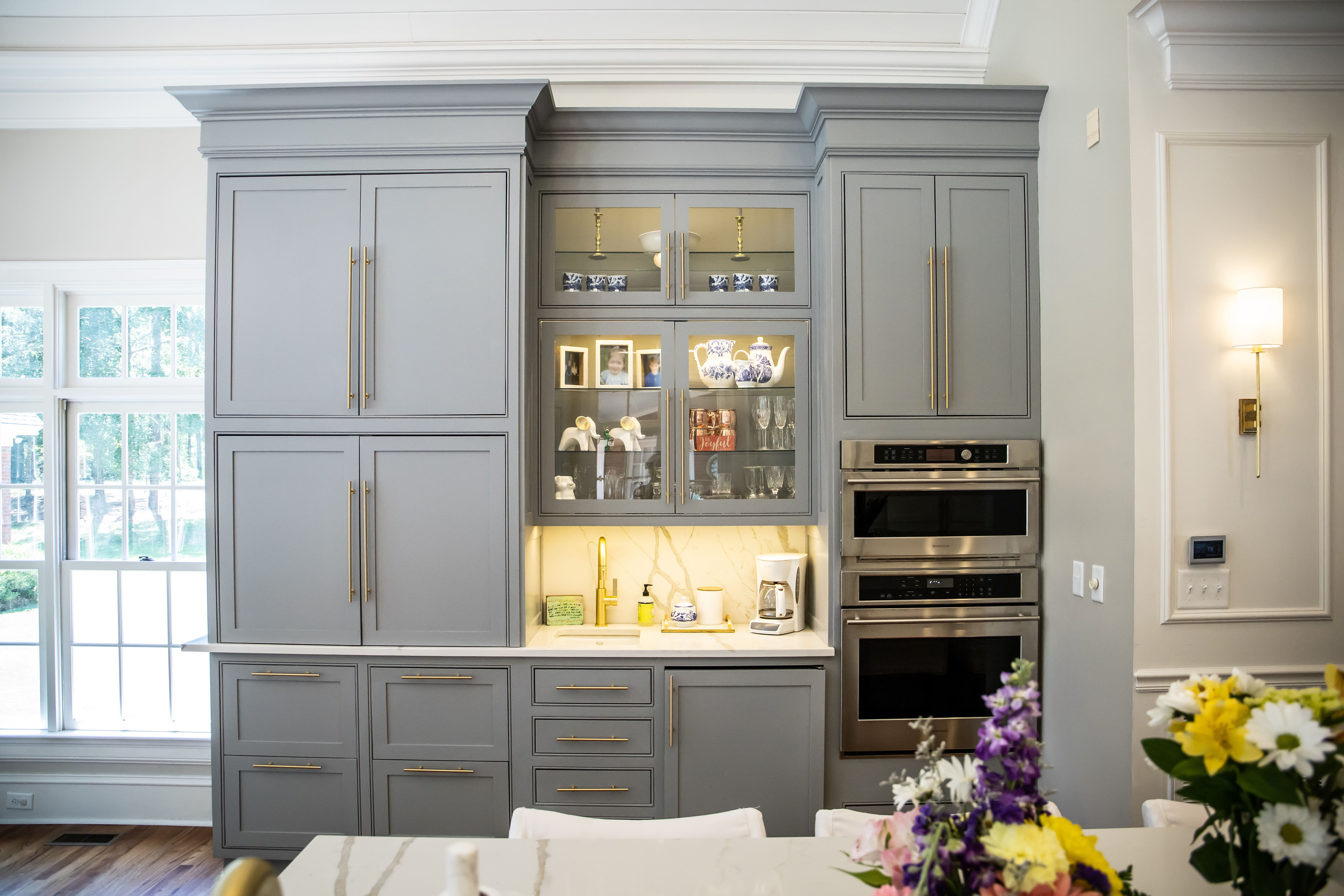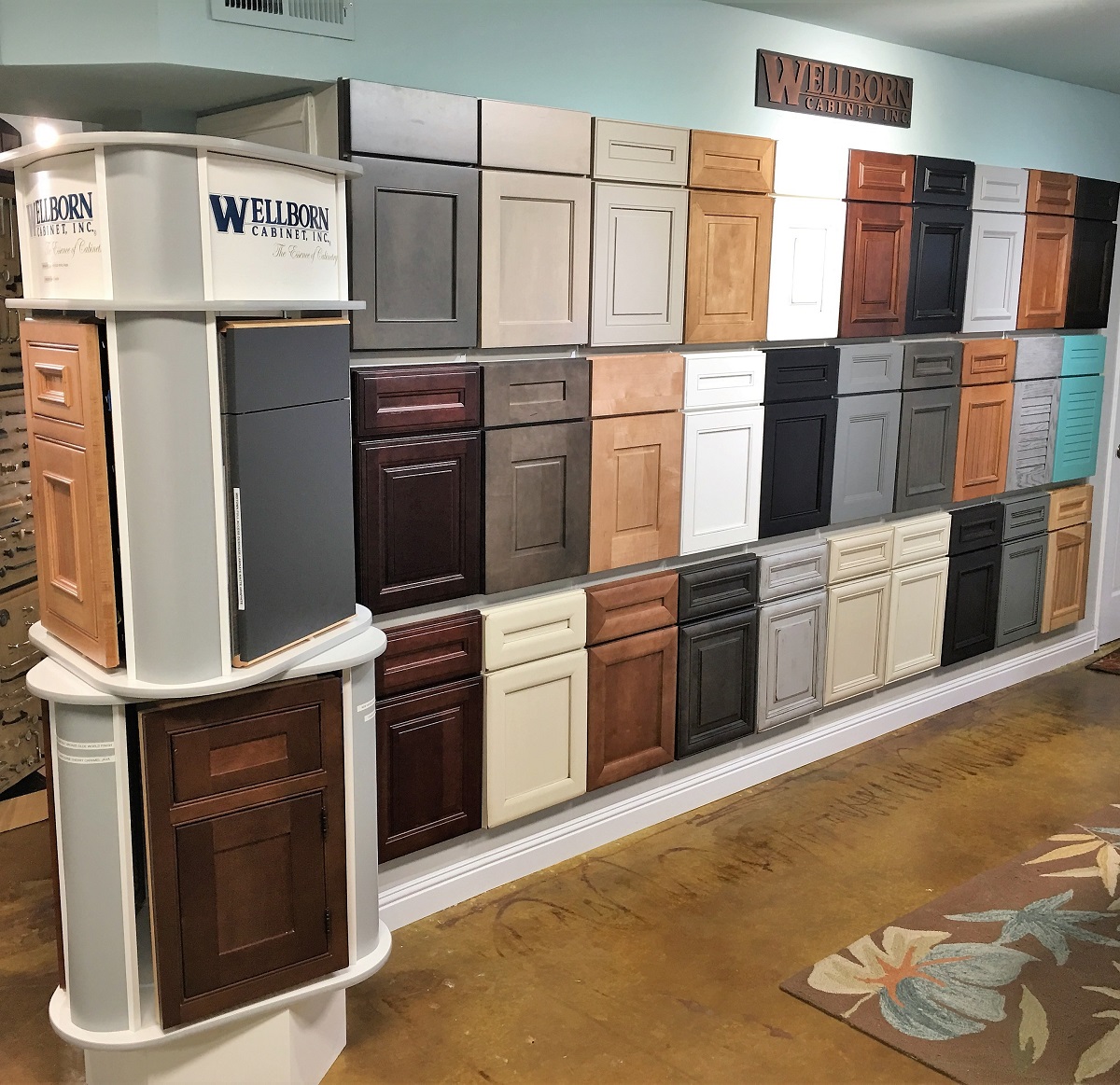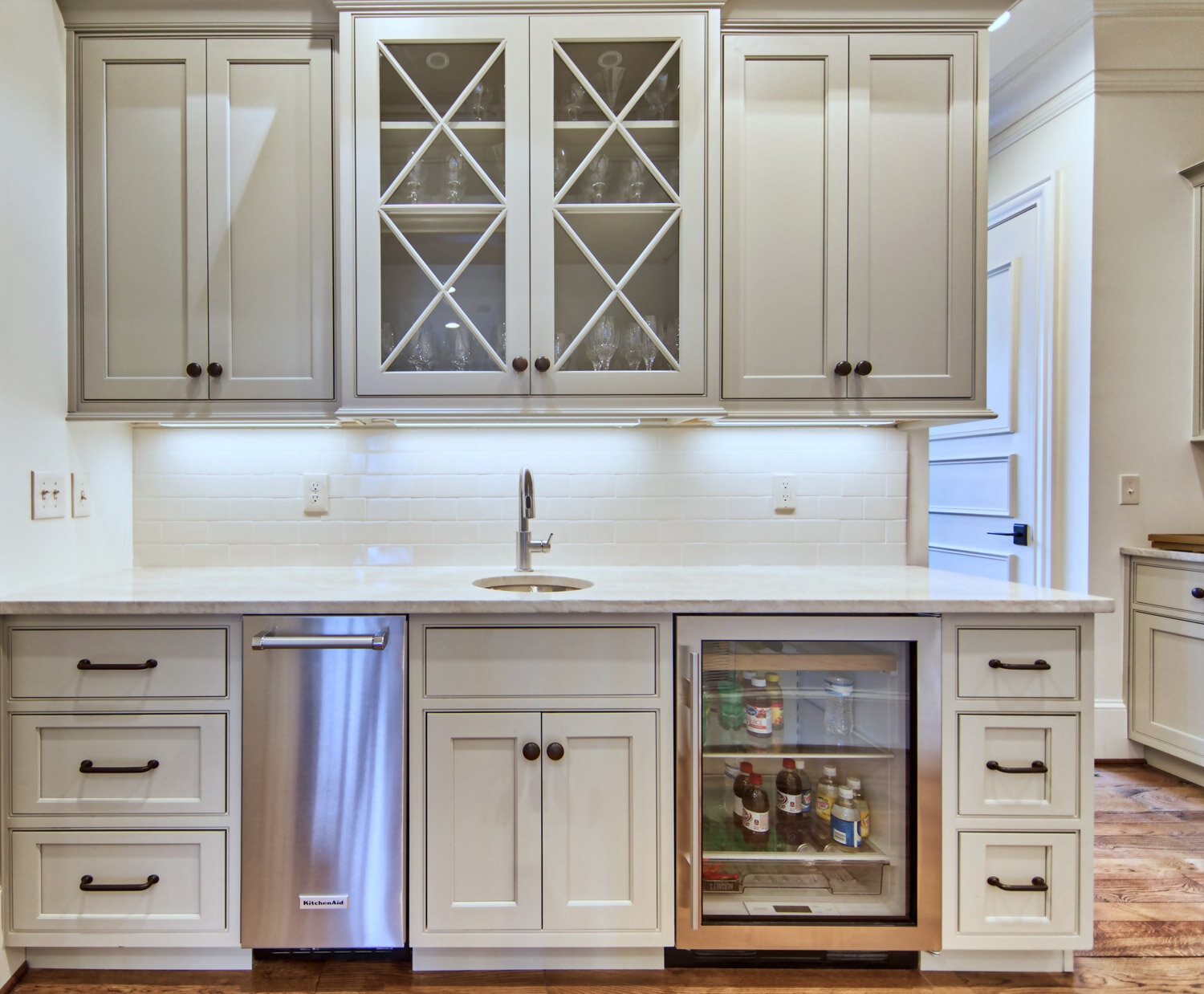Cabinet Door Styles and Materials

Cabinet doors are a significant design element in any kitchen or bathroom, influencing the overall aesthetic and functionality of the space. Understanding the various styles and materials available is crucial for making informed decisions that align with personal preferences and budget considerations. This section delves into the popular cabinet door styles and explores the advantages and disadvantages of different materials used in their construction.
Cabinet Door Styles
Cabinet door styles encompass a wide range of designs, each with unique characteristics that impact the visual appeal and functionality of the cabinetry. Some of the most common styles include:
- Shaker: Simple and elegant, characterized by a recessed center panel and a frame with minimal ornamentation. They offer a timeless appeal and blend seamlessly with various design styles.
- Raised Panel: Featuring a raised center panel that creates a three-dimensional effect, these doors add visual interest and depth to cabinetry. The raised panel can be plain or embellished with decorative elements like moldings or carvings.
- Slab: A minimalist and contemporary choice, slab doors consist of a single, flat panel without any visible frame or raised details. Their clean lines and sleek appearance create a modern and streamlined aesthetic.
- Beaded: This style incorporates a beaded edge along the perimeter of the door, adding a touch of traditional charm and detail. Beaded doors are often found in farmhouse or cottage-style kitchens.
- Inset: Inset doors are flush with the cabinet frame, creating a seamless and integrated look. They are typically constructed from solid wood and require precise craftsmanship for a flawless finish.
Cabinet Door Materials
The choice of material significantly impacts the durability, cost, and maintenance requirements of cabinet doors. Common materials used in cabinet door construction include:
- Wood: A natural and versatile material, wood offers a wide range of options in terms of species, grain patterns, and finishes. It is known for its durability, warmth, and aesthetic appeal. Common wood species used for cabinet doors include maple, cherry, oak, and walnut.
- Advantages: Durability, natural beauty, variety of finishes, and repairable.
- Disadvantages: Higher cost, susceptible to moisture damage, and requires regular maintenance.
- Laminate: A synthetic material made by bonding layers of paper or plastic with resin, laminate offers durability, affordability, and a wide range of colors and patterns. It is resistant to scratches, stains, and moisture, making it a practical choice for high-traffic areas.
- Advantages: Durable, affordable, wide range of colors and patterns, and easy to clean.
- Disadvantages: Can be less aesthetically pleasing than wood, not as repairable, and can chip or peel over time.
- Metal: Metal cabinet doors, typically made from aluminum or stainless steel, offer exceptional durability, resistance to scratches and dents, and a modern aesthetic. They are often used in contemporary kitchens or bathrooms.
- Advantages: Durable, scratch and dent resistant, easy to clean, and available in various finishes.
- Disadvantages: Can be more expensive than wood or laminate, may not be as warm or aesthetically pleasing as wood, and can be prone to fingerprints and smudges.
- Glass: Glass cabinet doors add a touch of elegance and sophistication to cabinetry. They can be plain or textured, and can be used to showcase decorative items or create a sense of openness in a space.
- Advantages: Adds elegance and sophistication, creates a sense of openness, and can be customized with various finishes and textures.
- Disadvantages: Can be more expensive than other materials, less durable than wood or laminate, and requires careful handling to avoid breakage.
Cabinet Door Style and Material Comparison
The following table summarizes popular cabinet door styles and materials, highlighting their key characteristics:
| Style | Material | Characteristics |
|---|---|---|
| Shaker | Wood | Simple, elegant, timeless appeal, durable, versatile. |
| Raised Panel | Wood, laminate | Adds visual interest and depth, can be embellished with decorative elements. |
| Slab | Wood, laminate, metal | Minimalist, contemporary, clean lines, sleek appearance. |
| Beaded | Wood | Traditional charm, adds detail, often found in farmhouse or cottage-style kitchens. |
| Inset | Wood | Seamless and integrated look, requires precise craftsmanship, durable. |
Cabinet Door Functionality and Features: Cabinet Door World Reviews

Cabinet doors are not just decorative elements; they play a crucial role in the functionality and usability of your kitchen or bathroom cabinets. Their design, hinges, hardware, and additional features directly impact how easily you can access and utilize your storage space. Understanding these features can help you choose the best options for your specific needs and preferences.
Cabinet Door Hinges
Cabinet door hinges are the unsung heroes of cabinet functionality, providing the smooth opening and closing motion that we take for granted. Different types of hinges offer distinct advantages and disadvantages, impacting the overall user experience.
- Full Overlay Hinges: These hinges are commonly used in modern kitchens. They allow the cabinet door to cover the entire cabinet face, creating a sleek and seamless look. Full overlay hinges are typically adjustable, making it easy to fine-tune the door alignment.
- Semi Overlay Hinges: Semi overlay hinges are a popular choice for traditional cabinets. They leave a small gap between the cabinet door and the cabinet face, exposing a portion of the cabinet frame. This style is often preferred for its classic look and the ability to showcase decorative cabinet molding.
- Inset Hinges: Inset hinges are used for cabinets with doors that sit flush with the cabinet face. These hinges require precise installation and are typically used in high-end cabinetry, where the focus is on a clean and minimalist aesthetic.
- European Hinges: These hinges are known for their durability, adjustability, and smooth operation. They often feature soft-close mechanisms, preventing the door from slamming shut.
Cabinet Door Hardware
Cabinet door hardware encompasses the handles, knobs, and pulls that you use to open and close your cabinets. The choice of hardware can significantly impact the overall style and functionality of your cabinets.
- Handles: Handles come in various shapes, sizes, and materials, offering a wide range of design options. They provide a comfortable grip and are particularly suitable for larger cabinets that require a firm grasp.
- Knobs: Knobs are smaller and more compact than handles, making them ideal for smaller cabinets or drawers. They can be found in a variety of styles, from simple and minimalist to ornate and decorative.
- Pulls: Pulls are typically rectangular or bar-shaped, providing a solid grip for opening cabinets. They are often used on drawers or larger cabinets where a more substantial handle is desired.
Cabinet Door Dampers and Soft-Close Mechanisms, Cabinet door world reviews
Dampers and soft-close mechanisms are increasingly popular features in modern cabinetry. These innovative technologies provide a smooth and quiet closing experience, reducing noise and preventing doors from slamming shut.
- Dampers: Dampers use a hydraulic or pneumatic system to slow down the closing motion of the door, providing a gentle and controlled shut. They are typically integrated into the hinge or door itself.
- Soft-Close Mechanisms: Soft-close mechanisms are often built into the hinges or drawer slides, providing a gradual and silent closing action. They work by using a spring-loaded system that slows down the door or drawer as it approaches the closed position.
Unique Cabinet Door Features
Beyond the basics, there are a variety of unique features that can enhance the functionality and aesthetics of your cabinet doors.
- Integrated Lighting: Installing LED lights within your cabinet doors can create a dramatic effect, illuminating the contents and making it easier to find what you need.
- Hidden Compartments: Cabinet doors can be designed with hidden compartments, providing extra storage space for items you want to keep out of sight.
- Magnetic Closures: Magnetic closures provide a secure and silent closing action, ensuring that your cabinet doors stay closed without the need for latches or handles.
Global Market Trends and Consumer Preferences

The global cabinet door market is dynamic and evolving, driven by a confluence of factors including changing consumer preferences, technological advancements, and sustainability concerns. Understanding these trends is crucial for manufacturers and retailers to stay competitive and cater to the diverse needs of customers worldwide.
Emerging Trends in Cabinet Door Design and Manufacturing
Emerging trends in cabinet door design and manufacturing are heavily influenced by sustainability, technological innovation, and the desire for personalization.
- Sustainable Materials: Consumers are increasingly conscious of environmental impact, driving demand for eco-friendly cabinet door materials. Recycled materials like reclaimed wood, bamboo, and recycled plastic are gaining popularity. Manufacturers are also exploring innovative materials like bio-based polymers and sustainable wood alternatives.
- Smart Technology Integration: Smart home technology is making its way into kitchens, with cabinet doors incorporating features like touch-sensitive opening mechanisms, integrated lighting, and even voice control. These features enhance convenience and create a more technologically advanced kitchen environment.
- 3D Printing and Customization: 3D printing is revolutionizing cabinet door manufacturing by allowing for greater customization and intricate designs. This technology enables the creation of unique, personalized doors with complex geometries and intricate details, catering to individual tastes and design preferences.
- Minimalist and Modern Aesthetics: Minimalist and modern designs are gaining traction globally, with clean lines, sleek surfaces, and a focus on functionality. These trends are reflected in cabinet door styles, with flat-panel doors, handleless designs, and integrated storage solutions becoming increasingly popular.
Consumer Preferences for Cabinet Door Styles, Materials, and Features
Consumer preferences for cabinet door styles, materials, and features vary significantly across different regions of the world, influenced by cultural, architectural, and lifestyle factors.
- North America: North American consumers often favor traditional and contemporary styles, with a preference for shaker, raised panel, and beaded inset doors. Natural wood finishes, such as cherry, maple, and oak, are popular choices, along with painted finishes in neutral tones. Functionality and durability are important considerations, with features like soft-close hinges and pull-out drawers being highly valued.
- Europe: European consumers tend to favor more minimalist and modern designs, with a preference for flat-panel doors, handleless designs, and high-quality materials like solid wood and high-gloss finishes. Sustainability is a key concern, with consumers actively seeking eco-friendly options and locally sourced materials. Innovative features like integrated lighting and touch-sensitive opening mechanisms are also popular.
- Asia: Asian consumers exhibit a wide range of preferences, influenced by local cultural and architectural styles. Traditional Japanese homes often feature sliding doors with intricate designs, while modern Asian kitchens may incorporate sleek, minimalist designs with a focus on functionality and space optimization. High-quality materials, including natural wood, metal, and glass, are highly valued, along with innovative storage solutions.
Influence of Cultural and Architectural Styles on Cabinet Door Design
Cultural and architectural styles play a significant role in shaping cabinet door design, influencing both the aesthetic and functional aspects of kitchen cabinetry.
- Traditional Styles: Traditional styles often draw inspiration from historical periods and regional architectural influences. For example, shaker doors, with their simple and functional design, originated in the 18th century and continue to be popular in contemporary kitchens. Traditional Japanese homes often feature sliding doors with intricate designs, reflecting the country’s rich cultural heritage.
- Modern and Contemporary Styles: Modern and contemporary styles prioritize clean lines, sleek surfaces, and a focus on functionality. Flat-panel doors, handleless designs, and integrated storage solutions are common features in modern kitchens, reflecting a minimalist aesthetic and a desire for space optimization.
- Regional Variations: Regional variations in architectural styles also influence cabinet door design. For example, kitchens in Mediterranean regions often feature warm, earthy tones and ornate designs, reflecting the region’s history and culture. Scandinavian kitchens, on the other hand, tend to be characterized by a minimalist aesthetic with a focus on natural materials and functionality.
Visual Representation of Popular Cabinet Door Trends
[INSERT VISUAL REPRESENTATION HERE]
[DESCRIBE THE VISUAL REPRESENTATION HERE]
Cabinet door world reviews often highlight the importance of functionality and aesthetics in bathroom design. For those seeking a blend of both, 3 door medicine cabinets with mirrors offer a practical solution. These cabinets provide ample storage space for toiletries while simultaneously enhancing the visual appeal of the bathroom, a key aspect frequently addressed in cabinet door world reviews.
Cabinet Door World reviews often highlight the company’s wide selection of cabinet door styles, from traditional to modern. However, even with such variety, some homeowners may find themselves with plain cabinet doors that lack visual interest. Fortunately, there are numerous ways to how to dress up plain cabinet doors , from adding decorative hardware to painting them in bold colors.
Ultimately, the reviews suggest that Cabinet Door World offers a solid foundation for creating a unique kitchen aesthetic, regardless of the initial style of the doors.
